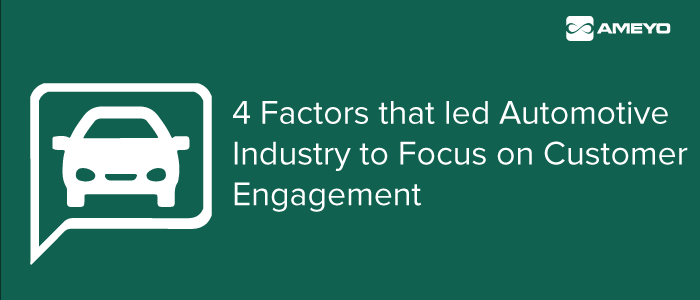Many automotive dealerships have not evolved at the same pace as the vehicles themselves when it comes to customer experience and in-store technology offered. Till today, the sales process at many dealerships is cumbersome and time-consuming. Customer’s demands are increasing and expectations are really high. The power of social media and other online platforms allows customers to communicate with one another and share their experiences. One can simply read reviews over the internet and form an opinion about a brand, thereby creating a need for automotive dealers to streamline and upgrade the buying and post-sales experience.
There are four major factors that contribute to the need for better customer engagement models to be adopted in the automotive industry:
Increasing Connectivity
Advanced technologies and growth in the number of smart phones and other mobile devices have changed the way consumers interact with brands.
Dealers need to go beyond using the Web and Social Media for communicating with its customers. They need to participate in conversations happening online and should be able to provide more customized and personalized interactions. This may include studying the behavioral patterns of website visitors and asking them questions related to their visits or sending them relevant content or providing live chat support to customers who are facing issues while browsing. The key here is not just being available at the right platform but to also deliver the right message at the right time.
Greater Competition
A vehicle dealership business does not only mean sales of new vehicles, it also includes sale of old vehicles, sale of spares, servicing of cars, and incentives from the vehicle manufacturer, insurance & financing companies. In general, new and used vehicle sales accounts for approximately 85% of a dealership’s total income, while sale of spares, accessories and service income along with incentives together contribute around 10-15% of total revenue. Although sale of spares, accessories and service income constitute a small proportion of the total revenue, the profit margins are relatively much higher as compared to margins involved in sale of new vehicles.
With a huge growth in the number of dealers of a brand in a particular city along with stiff competition from neighborhood garages for the service business and entry of multi-brand service providers, dealerships have to look at ways to retain their market share by enhancing the service provided.
In order to build customer loyalty, it is important to monitor the service on a 24*7 basis. An automotive dealer must be equipped with an automated customer feedback system to take correctives measures on-time. They should
- Collect customer feedback automatically, via IVR, SMS or Mobile Devices.
- Track customer comments on a real-time basis and generate online reports
- Have Reporting and Dashboard designed for various departments and functions throughout the organization
Integration of an automotive dealership’s contact center solution with an Automotive Aftermarket Software like Kerridge Commercial Systems, Epicor and Mam Software automates Customer service and Collections processes, thereby delivering exceptional customer service and improving profitability.
Evolving Customer Expectations
Customers today are more knowledgeable than ever and some may spend hours researching vehicles and is well informed when he visits a dealership. Vehicle information is readily available online—user reviews, third party ratings, and performance figures from seemingly endless sources. Hence, a one-size-fits-all approach towards all customers might not work now. Dealers have to be more flexible and offer customized solutions to the customers to increase sales and secure loyalty.
Customer expectations are evolving and they need a differentiated experience. According to Deloitte’s research, for Gen Y automotive consumers (born between 1977-1994), the customer experience is three times more important than vehicle design to their ultimate purchase decision.
Proactively sending customers alerts to let them know they’re due to take their vehicles in for a service or an oil change is a great way to lure your customers and foster an ongoing relationship.
Audi’s virtual showroom that allows consumers to engage and influence the manufacturing process through a high-resolution digital interface in the showroom is an awesome example of auto manufacturers and dealers constantly innovating their customer experiences.
According to a study, automotive sales could grow up to 24% –if buyer’s experiences improved.
New Business Models
Moreover, improved public transportation systems and the emergence of alternative mobility models like car-sharing are also reduce the need to own a vehicle in a traditional way. As a result, the dealers increasingly need to embrace technology and develop innovative models that engage consumers and drive revenue.

